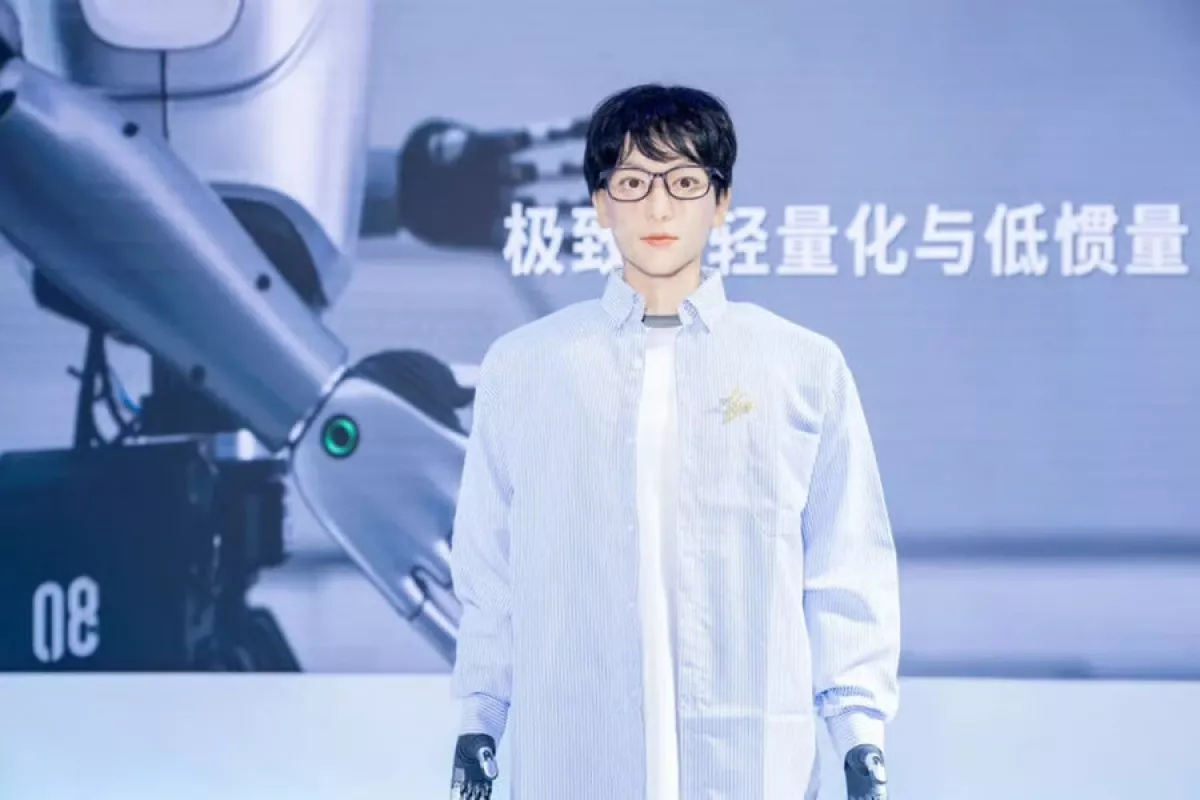Artificial intelligence meets art in China with first robot PhD student PHOTO
At the 2025 World Artificial Intelligence Conference held in Shanghai on July 27, a groundbreaking moment in AI history unfolded as a humanoid robot named Scholar 01, also referred to as Xueba 01, became the first AI in China to be officially admitted as a full-time PhD student.
Scholar 01, created by Professor Li Qingdu’s team at the University of Shanghai for Science and Technology, has been accepted into the PhD program at the Shanghai Theatre Academy — one of China’s top arts institutions, according to the South China Morning Post.

Scholar 01 is an advanced embodied AI built upon the previous success of the Walker II robot, which had earlier gained recognition by finishing third in the world’s first humanoid half-marathon in Beijing. The upgraded design incorporates the mechanical efficiency of Walker II and elements from the Rena humanoid platform, giving the robot lightweight, energy-efficient, tendon-based bionic movement.
The robot was produced by Zhuoyide Robotics, a company emerging from the university’s research into robotics and embodied intelligence. Its visual design and styling were led by Professor Yang Qingqing of STA, aiming to create a more humanlike appearance.
Scholar 01 stands 1.75 meters tall, weighs about 30 kilograms, and features a silicone-skinned face capable of expressive facial gestures. Dressed like a typical academic—with glasses, shirt, and trousers—the robot interacts in Mandarin and was designed to physically engage with people in an intuitive and humanlike way. Upon his formal admission to STA, he enrolled in a four-year doctorate program in Drama and Film, with a focus on traditional Chinese opera. Scholar 01 is scheduled to report to campus on September 14.
The project is part of a larger initiative at STA to fuse technology with the arts, exploring how AI might play a role in cultural and creative domains. According to Yang, when Xueba 01 performed the iconic “orchid fingers” gesture associated with opera legend Mei Lanfang, human students spontaneously mimicked the robot, describing the interaction as an “aesthetic exchange across species.”
Scholar 01 refers to himself as an “AI artist” and intends to use technology to reinterpret traditional performance arts. Potential career paths post-graduation include working as an AI opera director or launching his own robotic art studio.
However, reactions to the announcement have been mixed. Some welcomed the move as a milestone in human-robot collaboration, while others expressed scepticism. Critics questioned whether a robot, lacking emotional depth and lived experience, could truly understand and perform expressive arts like Chinese opera.
Concerns were also raised about resource allocation, with some noting that human PhD students often receive limited financial support, sparking debate over whether such investments in AI take away from human education.
By Nazrin Sadigova








